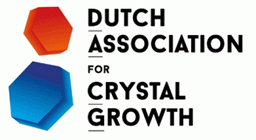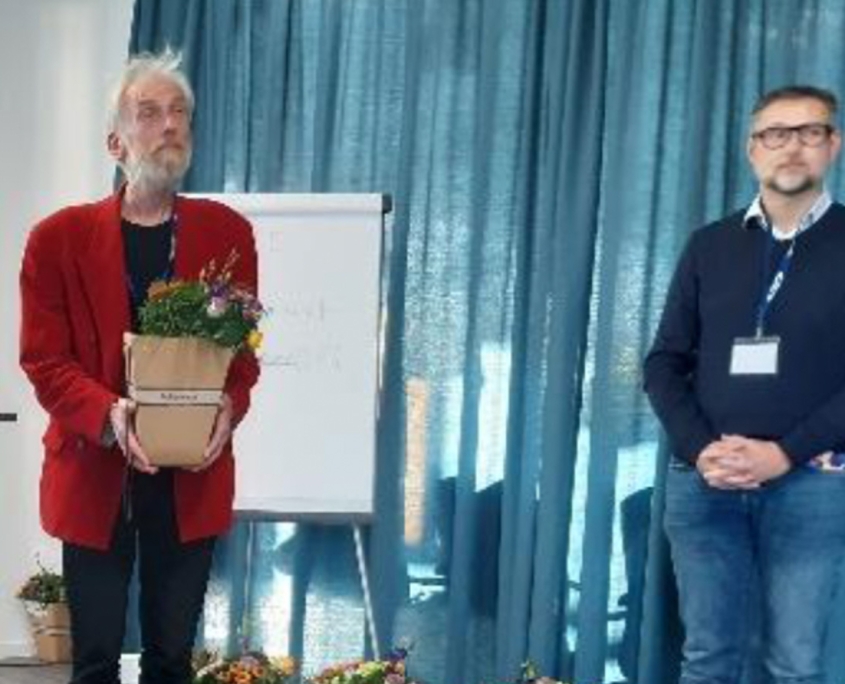21 October 2022, Technobis, Alkmaar
DACG Fall Symposium & General Members Meeting 2022
Program
- Welcome and introduction – Carmen Guguta
- Effect of solvent composition on solubility, thermodynamics, MSZW and crystal habit of ascorbic acid – Jyoti Yadav (Technobis)
- Artificial neural networks for co-crystal prediction – Elias Vlieg (Radboud University Nijmegen)
- Why spend so much time on crystallization? – Peter Daudey (Delft University of Technology)
- Size and microstructure control in crystallization from deep–eutectic solvents – Giuditta Perversi (Maastricht University)
- Annual meeting DACG / poster session
- Company visit
- The impact of solution stoichiometry on the nucleation and growth of calcium carbonate – Mariëtte Wolthers (Utrecht University)
- Solid form screening enhanced by advanced tools for characterization of pharmaceutical compounds – Mihaele Pop (TeraCrystal)
- Screening double salt sulfate hydrates for application in thermochemical heat storage – Wessel Kooijman (Radboud University Nijmegen)
- Non-random island nucleation in the electrochemical roughening on Pt(111) – Marcel Rost (Leiden University)
Report
On 21 October 2022, the DACG organized its fall symposium and annual meeting at Technobis Crystallization Systems in Alkmaar. The local organizers were Carmen Guguta with her Technobis team. The team had decorated the venue prominently with red, white and blue balloons to introduce our new logo!
Carmen Guguta (DACG chairperson) opened the symposium. The morning session was chaired by Hugo Meekes and the afternoon session by Danny Stam.
The session chairs: Hugo Meekes and Danny Stam
Carmen Guguta (DACG chairperson)
The first lecture was given by Jyoti Yadav from Technobis Crystallization systems. She demonstrated the power of Crystal16 and Crystalline for solubility measurements, studying the thermodynamics, MSZW, and crystal habit of ascorbic acid. She showed us, for example, the shape change from cubic crystals in water to needle/rod shaped crystals when more alcohol was added into the system.
Jyoti’s presentation was followed by Elias Vlieg (Radboud University Nijmegen). He told us about the importance of cocrystals and how to find cocrystals. Artificial Neural Networks are a good starting point for finding cocrystals when nothing is known about the substance. However, the best approach is to combine experiments with link–prediction and Artificial Neural Networks.
Jyoti Yadav (Technobis Crystallization systems): Effect of solvent composition on solubility, thermodynamics, MSZW, and crystal habit of ascorbic acid
Elias Vlieg (Radboud University Nijmegen): Artficial neural networks for co–crystal prediction
Next Peter Daudey (Delft University of Technology) took us along for his journey of lifelong learning on crystallization. We followed him from nucleation of Ammonium sulphate, scale–down of forced circulation NaCl crystallization, fouling and fines removal during continuous crystallization, pseudo– Boehmite precipitation, pharmaceutical batch crystallization by seeding and the DSTI crystallization skid studies in cooperation with several universities and industrial partners.
Peter’s presentation was followed by an excellent lunch, DACG annual meeting and a Technobis Crystallization Systems company tour. It was interesting to see where the Technobis instruments are assembled and tested.
After the tour Michaela Pop (TeraCrystal) told us about advanced tools used in solid form screening. She demonstrated the potential of electron diffraction for characterization of pharmaceutical compounds.
Peter Daudey (Delft University of Technology): Why spend so much time on crystallization?
Mihaela Pop (TeraCrystal): Solid form screening enhanced by advanced tools for the characterization of pharmaceutical compounds
Next Mariëtte Wolthers (Utrecht University) explained the asymmetric dependence between the nucleation and growth of calcium carbonate and the solution stoichiometry.
This study is part of the EU–funded CRYSTAL CLEAR project. Mariëtte was followed by Giuditta Perversi (Maastricht University). Microstructural control is key for performance and durability of functional materials. Giuditta showed us how size and microstructure can be controlled in crystallization from deep–eutectic solvents.
Marcel Rost (Leiden University): Non–random island nucleation in the electrochemical roughening on Pt(1 1 1)
Wessel Kooijman (Radboud University Nijmegen): Screening double salt sulfate hydrates for application in thermochemical heat storage
After a coffee break Marcel Rost (Leiden University) told us about Pt(1 1 1) oxidation and spoke wheels or maybe spook wheels. “We know where the nuclei must grow, but how do they know it?”
The last presentation of the symposium program was given by Wessel Kooijman (Radboud University Nijmegen). He demonstrated how to “simply” identify suitable double salt sulfate hydrates for thermochemical heat storage applications based on energy density, dehydration temperature, water vapor pressure during hydration and number of cycles.
Mariëtte Wolthers (Utrecht University): The impact of solution stoichiometry on the nucleation and growth of calcium carbonate
Giuditta Perversi (Maastricht University): Size and microstructure control in crystallization from deep– eutectic solvents











